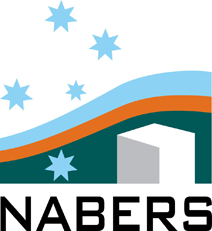So, you’ve just been asked to explain how well your cleaning services and products comply with Green Star-Performance, WELL Building and NABERs rating systems. How do you respond?
If you are a Cleaning Service Provider, do you know how your operations can support your customers to improve their energy efficiency, waste management and occupant wellbeing, and increase their capacity for higher ratings?
And if you are a Facility Manager, do you know what to ask of your service providers so as to optimise their performance inline with your building rating program?
Because if you’re still waiting until your ESD manager or customer to tell you what to do, you are way behind the eight-ball! So, to give you a quick jump-start, I’ve compiled an essential road map to the three main Australian building rating systems, NABERS, Green Star-Performance and the WELL Building Standard.
You should also consider booking our Green Clean Management Workshop to get your team up to speed with with the opportunities in this exciting growth area.

Three building rating schemes
It all started with the NABERS Energy rating system way back in 1998, under the title The Australian Building Greenhouse Rating. NABERS, which standards for National Australian Built Environment Rating System, then released rating systems for Water and Waste. Indoor Environment rating for offices was added in 2008.
Green Star – Performance (GSP) was developed by the Green Building Council of Australia (GBCA) in 2013 to measure the on-going use of Green Star rated buildings. GSP can also be applied to any existing buildings, whether were Green Star rated build or not.
And last but not least, the WELL Building Standard was launched in the USA in 2014 and came to Australia a year or so later.
While there are cross-overs between all three systems, each has its unique area of focus:
- Green Star – Performance (GSP) also has a performance-based criteria but rates a wider range of building operational data than NABERS. It also includes factors that encourage, or necessitate a good outcome, such as equipment, policies and actions.
- WELL Building Standard criteria is focused on the building design, build and supply to ensure a healthy environment for the wellbeing of its occupants. Its comprehensive criteria requires evidence of materials compliance to specifications and standards, and ensitu scientific testing.
- NABERS rates the building’s environmental impact by using scientific testing and data to measure its energy efficiency, water usage, waste management and indoor environment quality.

Two ways cleaning can help to increase the ratings
There are basically two different ways that cleaning services can support their customers to meet the rating criterion set for each system:
- Directly: For Green Star – Performance and WELL, there is specific criteria for cleaning products, practices, documentation and training.
- Indirectly: For all three systems, you can use cleaning equipment and practices that demonstrate capacity to reduce energy or water consumption, prevent indoor pollutants and support recycling initiatives.
Below is a quick guide to the criteria most relevant to cleaning products and services for each system.

Green Star – Performance
The current version of the Green Star – Performance rating tool, v1.2, was released in November 2017. GSP rates the way in which a building is being operated across the same nine categories of Green Star – four of which your products and services could assist indirectly: energy, water, materials and emissions.
GSP also has two categories that require direct involvement from the cleaning industry: Management (via the Green Cleaning Credit) and Waste (via the Waste from Operations Credit).
The Green Cleaning Credit requires the building owner / tenant to have a ‘green cleaning policy’ (or specification) that sets goals and performance targets for cleaning services, via documentation, procurement, management, monitoring and reporting, to deliver the following objectives:
- Surface hygiene and cross-contamination prevention.
- Supply of cleaning products / equipment to safe / environmental best practice standards.
- Use of vacuum cleaners fitted with HEPA filtration.
- Resource minimisation practices.
While their written policy attracts one point, an additional point is awarded for carrying it out in the building’s common areas, and a further point if it applies to all areas including tenancies. Obviously, cleaning companies with the capacity to meet, monitor and report on their customer’s performance targets and objectives, will be valued.
A fourth point is also available for having cleaning supervisors or managers with ‘Certificates of Attainment’ in the accredited training units: (current codes)
- CPPCLO3011 – Clean using environmentally sustainable work practices.
- CPPSS00052 – Develop and Implement environmentally sustainable cleaning programs.
The Waste from Operations Credit requires cleaning staff to be involved in managing, auditing and reporting on the building’s recycling and waste collection. As with NABERS, look for ways to improve and demonstrate energy efficiency and that can indirectly support their Green Star – Performance ratings.

The WELL™ Building Standard
Of the ten ‘Concepts’ in the WELL Building Standard, Cleaning Products and Protocol (X09) sits under ‘Materials’, with the aim ‘to reduce pathogens, allergens and hazardous cleaning chemicals’.
Unfortunately version v.2.1, released in June this year, has less direct requirements for cleaning than v.1 had. However it still contains some direct requirements for cleaning services, including:
Cleaning Product criteria:
- Part 1 details cleaning product criteria for SDS or Eco-label certification.
- Part 2 requires an operation schedule and staff training in cleaning sequencing and safe product selection and product / equipment handling.
Cleaning protocols are required to detail:
- Extent and frequency of cleaning.
- Identification and maintenance of high touch points.
- Product storage and labelling.

NABERS
While there are no specific cleaning requirements in the NABERS criteria, the 2014 version of NABERS Indoor Environment Rating requires air quality testing for particulate matter, formaldehyde and total Volatile Organic Compounds (VOCs). This testing will detect VOCs emitted from cleaning products such as scented sprays, solvents, stain / graffiti removers, some glass cleaners and oil-based sealants.
Develop a policy for reducing the emission of pollutants while you clean, and indirectly help your customers achieve higher NABERS ratings. For example:
- Cleaning products certified by Eco-labels with VOCs and/or fragrance-free products.
- A ‘chemical-free’ system such as microfibre and/or altered water technology.
- Diamond cutting pads to replace oil-based sealants.
- Vacuum cleaners with HEPA filtration with well-maintained bags and filters.
Any evidence you can obtain to show that your cleaning equipment can reduce water or energy consumption to indirectly support these other NABERS categories, plus your capacity to support waste recycling initiatives, will be advantageous.

Knowledge is the key to success
It is important to recognise that each rating system comprises multiple, optional criteria. Unfortunately, participants may not be interested in the specific category that your service/product supports, or they do not believe it will have a big enough impact on their ratings to warrant the effort.
Remember that Green Star – Performance, WELL Building standard and NABERS are complex systems and more challenging for the participants than service or product suppliers. Therefore, this is an exciting opportunity to demonstrate your knowledge by attending Green Clean Management training and also your operational capacity.
Your efforts to measure and validate your claims will be optimised if you strategically focus on aspects that can deliver the biggest outcome, relevant to your customer’s chosen rating system. The HPC Solutions Innovation package will help you to develop and implement a High Performance Cleaning program that enables you to tap into this exciting opportunity.
About the author:

Bridget Gardner is Director and Principal Consultant of HPC Solutions (formerly Fresh Green Clean).
This article was first published in Inclean Magazine, September 2018.

